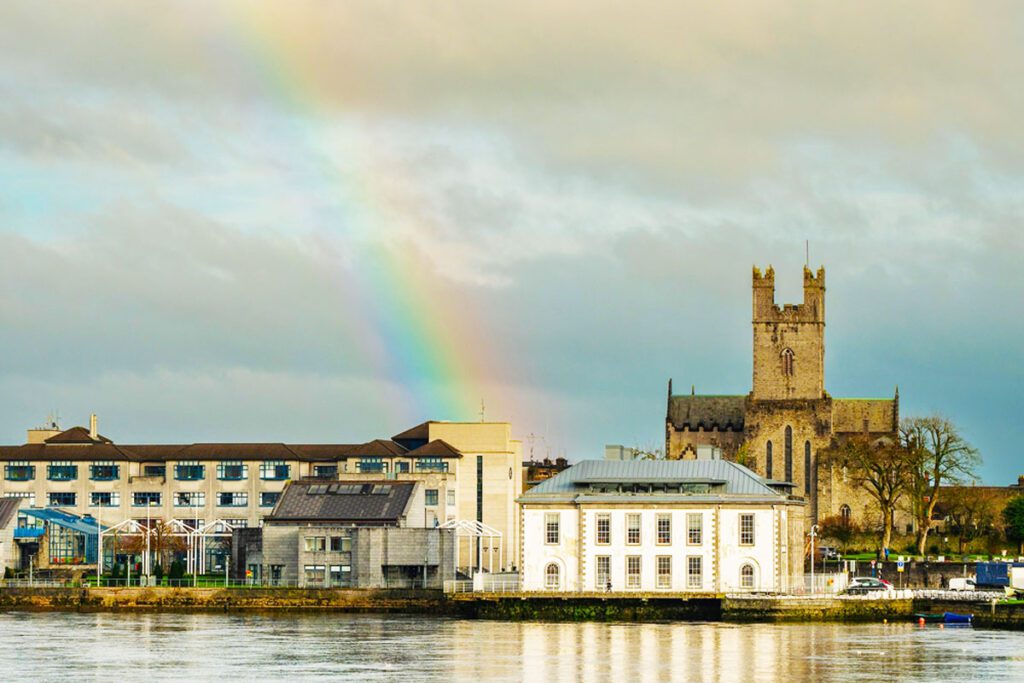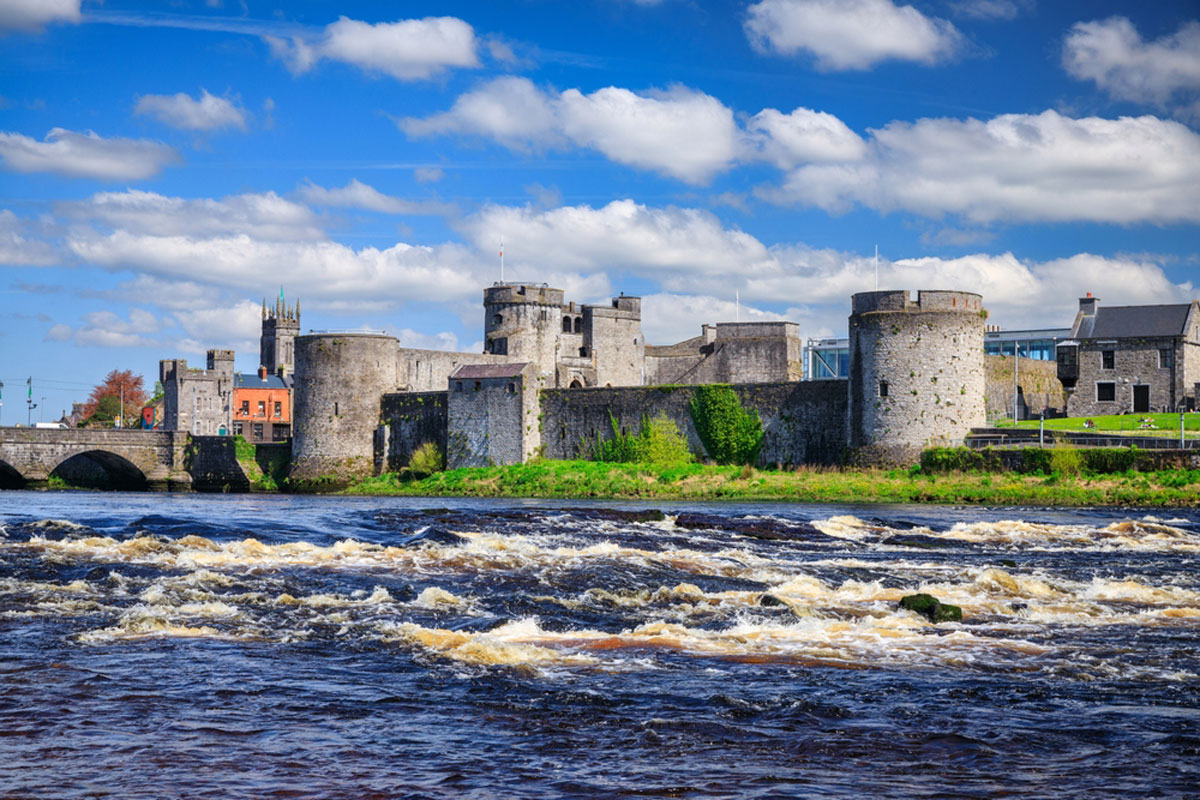Founded in 1168 in Limerick, St. Mary’s Cathedral is one of the oldest continuously used places of worship in Ireland. From medieval foundations to modern significance, lets now explore the enduring legacy of a national treasure.
Table of Contents
- Part 1: The Foundation of St. Mary’s Cathedral
- Part 2: Medieval Architecture and Sacred Art
- Part 3: The Cathedral Through Conflict and Reformation
- Part 4: Restoration and the Modern Cathedral
- Part 5: Legacy, Faith, and Cultural Importance
The Foundation of St. Mary’s Cathedral
St. Mary’s Cathedral was founded in 1168 by Donal Mór O’Brien, the last King of Munster and a prominent figure in Ireland’s shifting medieval landscape. He established the cathedral on the site of his former palace, which itself stood on the ancient heart of Viking Limerick. This symbolic transformation—from royal stronghold to sacred space—reflected a new era of Christian authority and Norman influence in Ireland.
The decision to build such a grand structure in Limerick was a bold one. At the time, the city was a strategic location, commanding both the River Shannon and the political balance between Gaelic and Norman forces. O’Brien’s foundation of the cathedral was as much a statement of sovereignty as it was an act of faith. The earliest parts of the cathedral, including the Romanesque west doorway and sections of the nave, still date from this original construction period.
Early documents indicate that the cathedral quickly became a centre of diocesan life, with connections to other monastic settlements throughout Munster. It played host to synods, hosted visiting clerics, and served as a burial place for notable families. The cathedral was also instrumental in introducing Continental liturgical practices to the region, aligning the Irish Church more closely with Rome.
Medieval Architecture and Sacred Art
The architectural style of St. Mary’s Cathedral is a unique fusion of Romanesque strength and Gothic elegance. Over the centuries, it has grown organically, with additions and restorations reflecting both practical needs and prevailing artistic trends of the time.
The soaring tower, added in the 14th century, remains one of Limerick’s most iconic landmarks. It rises to a height of 120 feet and was historically used not only to call the faithful to worship but also as a lookout and symbol of civic pride. Inside, the cathedral’s layout retains the traditional cruciform plan, with a central nave, north and south transepts, and a chancel leading to the east end’s high altar.
Numerous architectural gems grace the building’s interior. Among them are intricately carved medieval tombs of local bishops and nobility, including the 15th-century tomb of Bishop Eóin Ó hÍceadha, adorned with Gothic tracery. The Lady Chapel, constructed in the 15th century, showcases beautiful vaulted ceilings and is home to some of the most delicate medieval stonework in Ireland. Hidden carvings of mythical beasts and Celtic knotwork offer insight into a unique blend of Christian and native artistic traditions.
The cathedral also houses a rare 17th-century altar, notable for surviving the Cromwellian period of iconoclasm. Meanwhile, the stained glass windows—ranging from fragments of medieval glass to later Victorian works by artists like Harry Clarke—bathe the interior in a kaleidoscope of spiritual light. Decorative floor tiles, relic niches, and original oak choir stalls further emphasize the cathedral’s medieval craftsmanship.
The Cathedral Through Conflict and Reformation
The 16th and 17th centuries brought seismic changes to the religious landscape of Ireland, and St. Mary’s Cathedral was deeply affected. During the Protestant Reformation, the cathedral was transferred from Catholic to Anglican hands, becoming part of the Church of Ireland. This shift, while peaceful in some regions, was marked by tension and resistance in others—particularly in Gaelic strongholds like Munster.
During the Cromwellian conquest in the mid-1600s, the cathedral was used as a stable by Parliamentary troops, and much of its internal decoration was destroyed. Statues, altars, and artworks deemed “popish” were smashed or removed. Yet, remarkably, the building itself survived the widespread destruction that befell many Irish religious sites during this period. Church records from the 17th century note damage to the nave and cloister but also reflect the resilience of the local congregation, who returned after military withdrawal to reestablish worship.
The 1691 Siege of Limerick, part of the wider Williamite War, once again placed St. Mary’s in the path of conflict. Its location within the city’s fortified area meant it bore witness to some of the most intense fighting, yet it remained a place of resilience. In the aftermath, it resumed its role as the city’s central cathedral, albeit now firmly within the Anglican tradition.
Throughout these centuries of strife, St. Mary’s remained a symbol of Limerick’s endurance—its stone walls echoing the prayers and struggles of generations. The cathedral’s continued use during these turbulent times underscores its significance not only as a religious building but also as a cultural and historical touchstone.

Restoration and the Modern Cathedral
By the 19th century, concerns about the cathedral’s physical condition prompted major restoration efforts. Architects and craftsmen, often guided by antiquarians and church historians, sought to repair and preserve the fabric of the building while respecting its medieval character. These efforts coincided with a wider revival of interest in Gothic architecture across Europe.
Victorian restorations included re-roofing the nave, replacing eroded stonework, and installing new stained glass. Many of the current pews, flooring, and altar furnishings date from this era. Some of the interventions—such as the replacement of older altar rails or pulpit—have been debated by modern conservationists, but the intent was to safeguard the structure for future generations.
In the 20th and 21st centuries, further restorations ensured the structure remained sound and accessible. Modern lighting, heating, and audio systems were added discreetly to accommodate worship and tourism. Accessibility improvements, interpretive signage, and public exhibitions have made the cathedral more welcoming to a wider audience, including those seeking its historical, artistic, or spiritual treasures.
Today, the cathedral also engages in outreach through concerts, public lectures, and educational events. It participates in Limerick’s cultural calendar, welcoming both locals and international visitors. As a member of the Church of Ireland, it fosters ecumenical dialogue and remains open to people of all faiths who seek its quiet majesty.
Legacy, Faith, and Cultural Importance
St. Mary’s Cathedral has served as a spiritual anchor in Limerick for more than 850 years. Its legacy is one of quiet strength, continuity, and adaptability. It remains a functioning house of worship, with regular services, liturgical events, and seasonal celebrations—especially during Christmas and Easter, when its ancient stones resonate with carols and candlelight.
As a historic site, it draws thousands of visitors annually. Tourists come to admire its architecture, historians delve into its records, and pilgrims find peace within its sacred silence. Its bells still ring out over the city, calling not just the faithful but anyone seeking beauty, reflection, and connection.
Important historical figures such as Bishop Hugh Lacy and the O’Brien family have close ties to the cathedral, and its archives contain centuries of baptismal, marriage, and burial records invaluable to genealogists and researchers. Its Chapter House, once a meeting room for clergy, now hosts exhibitions and civic receptions.
For the people of Limerick and Ireland more broadly, St. Mary’s is more than just an old building—it is a storyteller. Its weathered stones tell tales of kings and clergy, of sieges and prayers, of destruction and renewal. It has stood as witness to the unfolding story of Ireland, from medieval times to modern days.
In a rapidly changing world, the presence of St. Mary’s Cathedral offers a reminder of permanence, sacred tradition, and the enduring power of faith. It is a monument not only to the past but to the human spirit that continues to find meaning within its walls.
Historical and Cultural Sites
- King John’s Castle – A 13th-century castle in the heart of Limerick City, offering interactive exhibits and stunning river views.
- St. Mary’s Cathedral – Founded in 1168, this is one of Ireland’s oldest and most iconic churches.
- The Hunt Museum – Home to an impressive collection of art and antiquities, including works by Renoir and Picasso.
- Adare Village – Known for its thatched cottages, medieval churches, and Adare Manor.
- Lough Gur Heritage Centre – Discover 6,000 years of history at this ancient archaeological site.
Natural Attractions
- Curraghchase Forest Park – A serene park with walking trails, a lake, and picnic spots.
- The Ballyhoura Mountains – Perfect for hiking, mountain biking, and enjoying panoramic views.
- Clare Glens – A series of waterfalls and forest trails along the Clare River.
- The River Shannon – Ideal for boat trips, fishing, and riverside walks.
- Knockfierna Hill – Known as the “Hill of Truth,” offering stunning vistas of the surrounding countryside.
Unique Experiences
- Foynes Flying Boat & Maritime Museum – Explore the history of transatlantic aviation and the invention of Irish coffee.
- Bunratty Castle and Folk Park – A living museum showcasing medieval life, complete with costumed guides and traditional feasts.
- Limerick Milk Market – A vibrant market featuring local produce, crafts, and live music.
- Stonehall Visitor Farm & Wildlife Park – A family-friendly destination with animals and nature trails.
- Treaty Stone – A historic symbol commemorating the 1691 Treaty of Limerick.
Scenic Drives and Villages
- Adare to Askeaton – A picturesque route showcasing charming villages and historical ruins.
- Glin – A coastal village known for Glin Castle and scenic Shannon Estuary views.
- Kilfinane – A gateway to the Ballyhoura Mountains and a hub for outdoor enthusiasts.
- Abbeyfeale – Located near the River Feale, offering fishing and a warm community atmosphere.
- Castleconnell – A quaint riverside village popular for angling and leisurely strolls.
Outdoor Activities
- Ballyhoura Mountain Bike Trails – Ireland’s largest network of trails for all skill levels.
- Fishing on the Shannon – Renowned for its salmon and trout.
- Golf Courses – Enjoy world-class courses such as Adare Manor Golf Club.
- Kayaking on the Shannon – Explore the river’s beauty up close.
- Horseback Riding – Scenic treks through the countryside.
County Limerick combines rich history, natural beauty, and unique experiences, making it a diverse and captivating destination for visitors.
Helpful Resources








